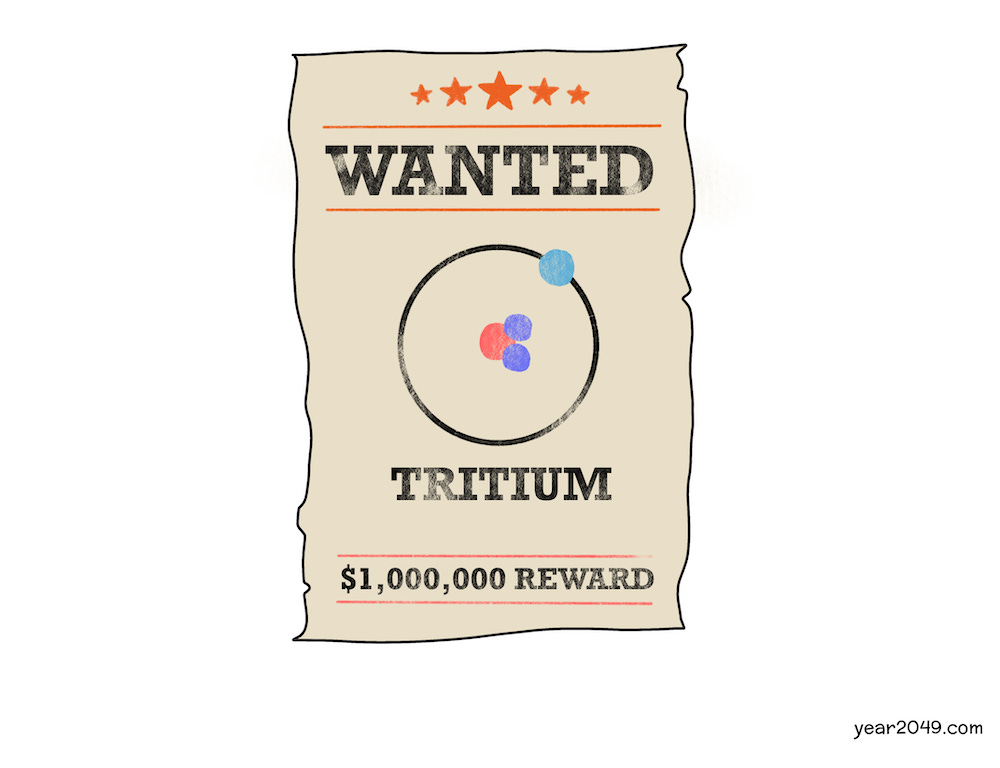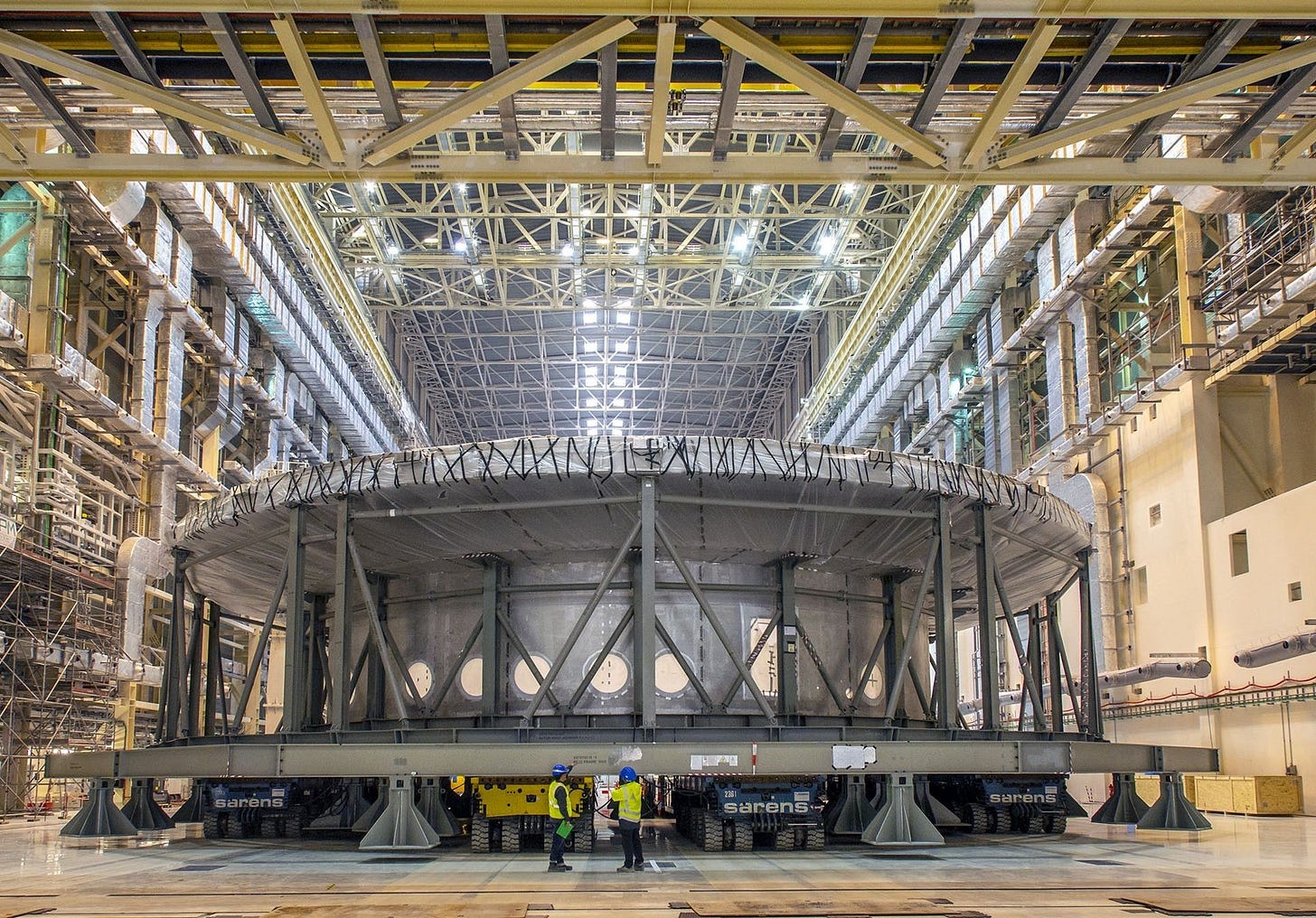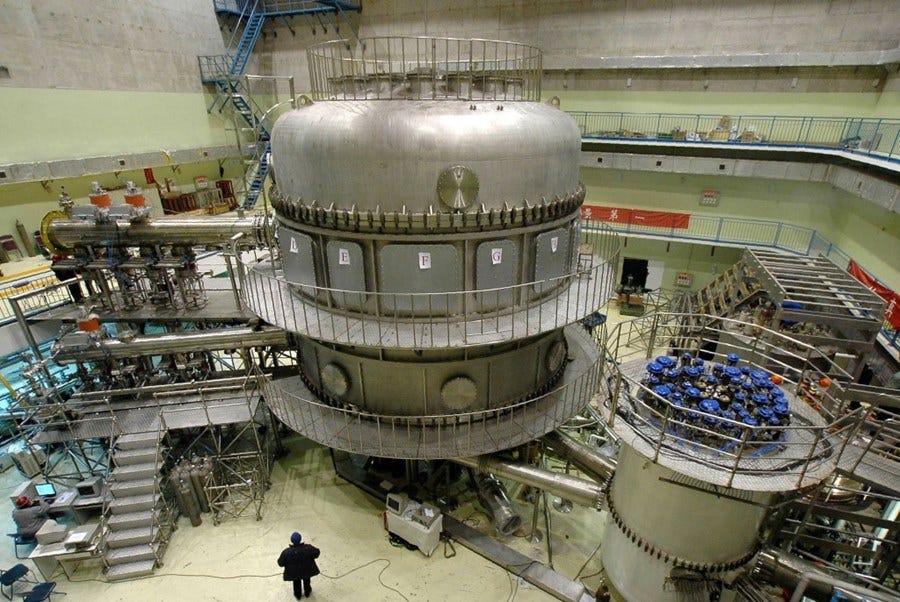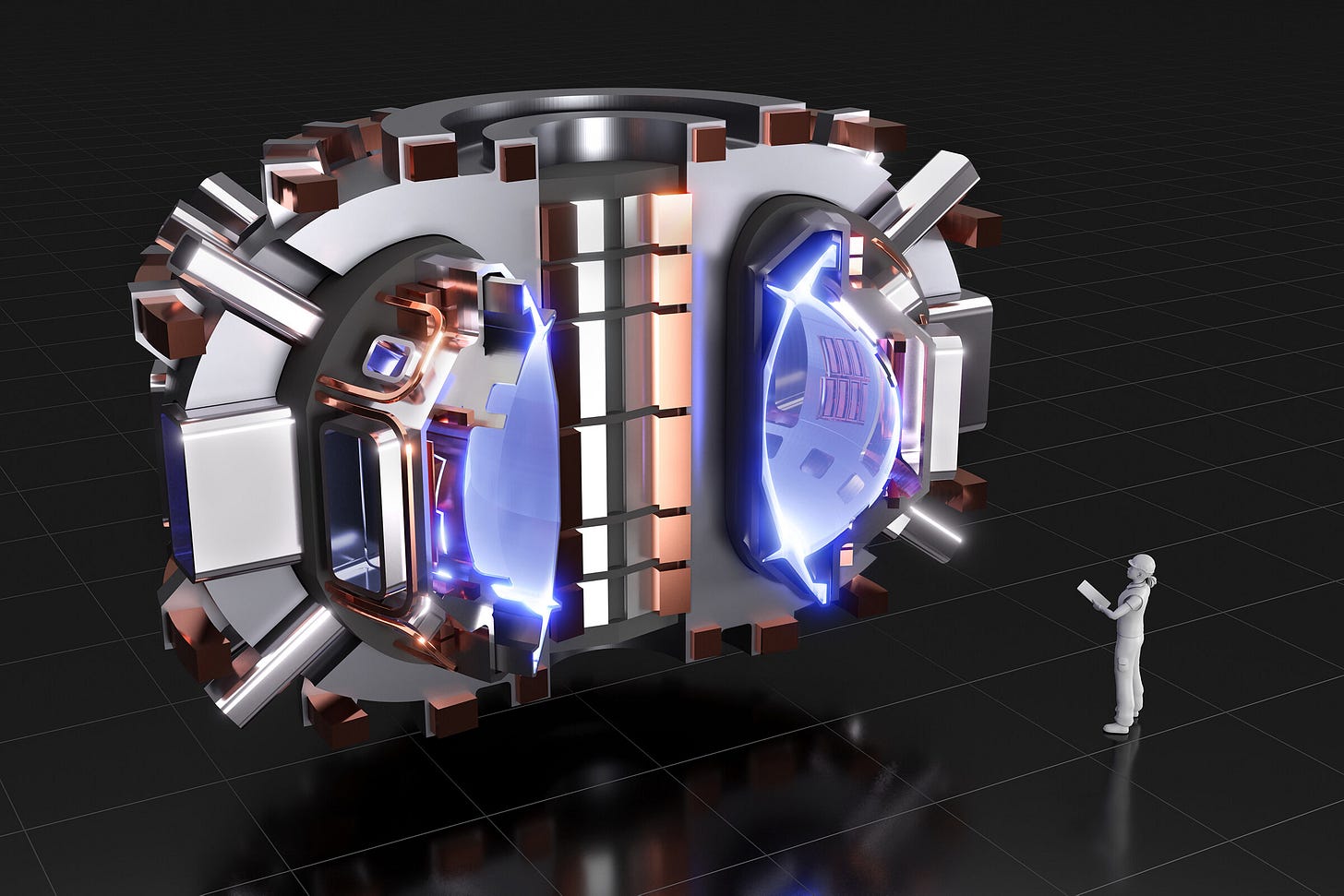A brief history of fusion power
In the 20th century, scientists started asking themselves how stars, like the Sun, powered themselves.
In 1939, Hans Bethe suggested that stars got their energy from hydrogen nuclei colliding together in their core and releasing energy. This process later became known as nuclear fusion.
Advanced research into fusion was initially motivated by the potential to create more destructive weapons. The US, Britain, and the Soviet Union kept their nuclear fusion research programs classified until the Second Geneva Convention on the Peaceful Uses of Atomic Energy in 1958.

Since then, research into nuclear fusion has been an international collaboration because of its potential to generate virtually unlimited and clean energy for everyone. Unfortunately, nobody has been able to create a sustained fusion reactor yet.
Nuclear fusion has felt like a mirage that we’ve been chasing for almost a century. But that hasn’t stopped the international community from keeping their foot on the gas and investing in more research, with the hope of turning our biggest dream into reality.
Even if you’re not aware of the hype and excitement surrounding fusion power, you’ve most likely seen fusion reactors in some popular movies including Back to the Future, Spider-Man 2, and Iron Man.

Nuclear Reactions: Fission vs Fusion
One-sixth of the world’s electricity comes from nuclear fission. The biggest difference between fission and fusion is what fuels the reaction:
Fission: a heavy atom, like Uranium, is split into two lighter ones.
Fusion: two light atoms, like Hydrogen, merge to form a heavier one.
How fusion works
Fusion reactions happen constantly in the Sun’s core.
The Sun’s mass creates a high-temperature and high-pressure environment for Hydrogen nuclei to fuse and form a Helium atom while releasing energy.
More specifically, fusion reactions in the Sun happen between specific isotopes of Hydrogen known as Deuterium and Tritium, which are different than a standard Hydrogen atom (Protium).
To recreate this effect in a man-made reactor, scientists have generally taken one of two approaches:
Magnetic Confinement: using high temperatures and a strong magnetic field to contain deuterium and tritium in their plasma* state which allows them to fuse. Read a detailed explanation about this here.
Inertial Confinement: a small solid pellet of deuterium-tritium is hit with an intense laser beam that compresses it and raises its temperature to the point where fusion occurs. Read a detailed explanation about this here.
Most experimental fusion reactors today use magnetic confinement.
Plasma is the fourth state of matter: Solid → Liquid → Gas → Plasma
The challenges of creating a fusion reactor
As you can imagine, trying to replicate a reaction that happens in the Sun is no easy task. There have been two major challenges stopping scientists from creating a sustained fusion reactor:
1. Tritium is hard to find
Deuterium and Tritium are the fuel we need to harness fusion power.
Deuterium is a common element that can be found in seawater. About 1 in every 5,000 hydrogen atoms in seawater is in Deuterium form. Although that sounds like a small amount, it’s more than we need. Because of fusion’s high energy output, one gallon of seawater would produce as much energy as 300 gallons of gasoline (DOE).
Meanwhile, tritium is rare in nature and it’s estimated that only 20 kilograms of it exist in the world (ITER). Fortunately, there are alternatives:
Tritium Breeding: Tritium can be obtained by exposing lithium to fusion reactions. Lithium from extractable sources in the land would sufficiently power fusion plants for 1,000 years. You can read more about this here.
Using Helium: Helium-3 can be used as an alternative to tritium, but it’s also rare to find on Earth. However, the Moon’s surface has been showered with solar winds rich in Helium-3. Naturally, this has peaked people’s interest in mining the lunar surface.
So, there’s a solution to the tritium challenge.
2. We can’t create a net power output
The biggest challenge with fusion reactors is the energy output.
People around the world have created different types of reactors, but none of them are sustained fusion reactors.
This means that they consume more energy than they produce. Trying to replicate and maintain the high-temperature and high-pressure conditions of the Sun’s core in a reactor on Earth requires a lot of energy. Fusion reactors need an internal temperature of 100 million degrees Celsius to operate and maintain deuterium and tritium in their plasma state.
A fusion reactor has many design variables that affect the fusion reaction. These include the shape of the reactor, the strength of its magnetic field, and the material used for its inner walls. The goal is to tweak these variables to the point where net energy can be produced.
The benefits of fusion
Despite the challenges, fusion’s benefits are worthy of the decades of research and experimentation:
Virtually unlimited energy: In a world where we’re so dependent on finite and difficult-to-extract resources like fossil fuels, fusion power uses small quantities of abundant elements, like seawater, to generate the same energy output. This would scale well as our energy needs keep increasing.
Clean energy: Fusion’s waste product is helium, an inert and non-toxic gas. It also doesn’t create any long-lived radioactive nuclear waste but produces small quantities of radioactive waste that “cannot produce any serious danger” according to the IAEA.
Way more efficient: At equal mass, fusion releases
4 times more energy than fission
4 million times more energy than burning coal, oil, or gas
Much safer: Unlike a fission-powered nuclear reactor, there’s no risk of a nuclear meltdown. Fusion can only occur if extremely high temperatures are maintained, the plasma would cool down and the reaction would stop if any disturbance occurs.
The current state of fusion reactors from around the world
Many fusion reactors are being built around the world. Here are some highlights:
ITER
The International Thermonuclear Experimental Reactor, or ITER, is a collaborative effort from 35 nations to build the world’s largest fusion reactor in southern France. The members include the 27 EU countries, the US, China, the UK, Switzerland, India, Japan, Korea, and Russia.
The work on this 25,000-ton reactor has been ongoing since 1985 and it’s set to launch operations in 2025. Read more about ITER here.
China’s Artificial Sun
China’s been experimenting with its own fusion reactor, the Experimental Advanced Superconducting Tokamak (EAST), since 2006.
Major achievement: In December 2021, EAST broke the record for the longest sustained fusion reaction. The reactor ran for almost 18 minutes at over 120 million degrees Celsius.
Helion Energy
The Washington-based startup has been working on creating fusion generators since it was founded in 2013. So far, the company raised $577 million in funding with an additional $1.7 billion that will be unlocked after hitting certain milestones. Its investors include Peter Thiel’s Mithril Capital, Dustin Moskovitz (Facebook co-founder), Sam Altman (OpenAI CEO ), and Y Combinator.
Major achievement: Last year, it became the first private company to exceed 100 million degrees Celsius in its fusion generator (Business Wire).
Read more about Helion’s technology here.
Commonwealth Fusion Systems
Commonwealth Fusion, a spin-off from MIT’s Plasma Science and Fusion Center, is also building a fusion device called SPARC which is set to launch in 2025. CFS has raised a total of $2.2 billion from investors including Breakthrough Energy Ventures, which is funded by the likes of Bill Gates and Jeff Bezos.
Major achievement: The company has developed a novel superconducting magnet to create a stronger magnetic field in its reactor. In September 2021, the company broke a record by achieving a field of strength of 20 tesla (MIT). This is stronger than ITER’s 13-tesla magnetic field.
Read more about CFS’ technology here.
Final thoughts
Harnessing fusion power would be one of the most monumental achievements in the history of civilization. While there are still many challenges to overcome, scientists have made progress in bringing fusion power closer to the world.
At the same time, we don’t know when or if we will ever create sustained fusion reactors, but we know that the climate crisis we’re facing requires immediate transitions to clean sources of energy that work already. It would be risky and irresponsible to hang all of our hopes on fusion to solve our problems.
Alternate sources of energy will always be an important and recurring topic in this newsletter, so make sure to stick around to keep learning about them.
A question for you
What do you think of fusion power? Leave a comment and share your perspective.
Previous episodes you might enjoy
⛑ Zipline’s delivery drones are improving healthcare access in Africa
🦾 Atom Limbs is creating neurally-controlled prosthetics
📱 Matter: the upcoming IoT standard that will link all your smart home devices
You can also check out all previous Year 2049 editions in chronological order to learn about other impactful innovations shaping our future across all aspects of life.
How would you rate this week's edition?















There are many more fusion approaches being considered. The Fusion Industry Association counts 26 members, all pursuing different approaches to fusion energy. See more here: https://www.fusionindustryassociation.org/
Great explanation and (encouraging long term) progress report on a vital topic. Success would be a total game changer on both environmental and socio-political fronts